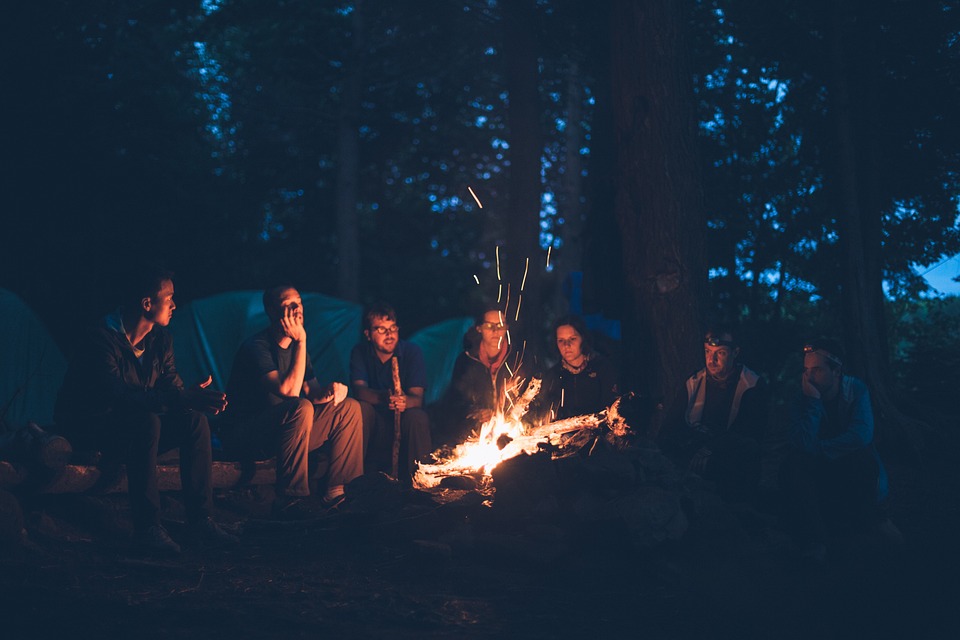When it comes to escaping the hustle and bustle of everyday life, camping is one of the best options.
It allows you to reconnect with nature, breathe in the fresh air, and recharge your mind and body.
However, before embarking on your camping adventure, it’s important to consider certain safety measures to ensure a smooth and enjoyable experience in the great outdoors.
Table of Contents
Choosing the Right Campsite
The first step towards a safe camping trip is selecting the right campsite.
Researching and choosing a well-established campground with good reviews is essential.
Look for campsites that offer proper amenities such as clean water sources, sanitary facilities, and designated fire pits.
Additionally, consider the location of the campsite and whether it suits your preferences and level of outdoor experience.
Informing Others of Your Plans
Before heading out into the wilderness, always inform a trusted friend or family member about your camping plans.
Share details about your chosen campsite, the anticipated duration of your stay, and any potential side trips or hikes you plan on taking.
This way, someone will be aware of your whereabouts in case of emergencies or if you fail to return as planned.
Checking the Weather Forecast
Keeping an eye on the weather forecast is crucial before setting off on a camping trip.
Extreme weather conditions, such as heavy rain, thunderstorms, or heatwaves, can pose significant risks to campers.
Be prepared for sudden changes in weather and have the appropriate gear, such as raincoats or extra layers, to ensure your safety and comfort.
Packing Essential Safety Gear
It is essential to pack appropriate safety gear to handle any potential emergencies while camping.
Some essential items to include are a well-stocked first aid kit, a map, a compass, a whistle for signaling, a multi-tool, a flashlight with spare batteries, and a fully charged mobile phone or satellite communicator.
Being prepared and having the necessary equipment can make a significant difference in ensuring your safety in outdoor environments.
Setting Up Camp Properly
When setting up your camp, it’s important to do so in a way that prioritizes safety.
Choose a level area away from potential hazards such as dead trees or rocky slopes.
Clear the campsite of any debris or flammable materials that could pose a fire risk.
Properly stake down your tent and secure any loose items to avoid accidents caused by strong wind gusts.
Following these precautions will reduce the risk of accidents and help create a secure camping environment.
Outdoor Fire Safety
A campfire can enhance the camping experience but also poses potential hazards.
Before starting a fire, check if campfires are permitted in the area and adhere to any specific rules or guidelines.
Always keep a bucket of water and a shovel nearby to help extinguish the fire completely before leaving the campsite or going to sleep.
Never leave a fire unattended and ensure that it is fully extinguished to prevent forest fires or accidental burns.
Wildlife Awareness
When exploring the great outdoors, it’s crucial to respect and be aware of the wildlife in the area.
Research the local fauna, especially if you’re heading into an area with potentially dangerous animals.
Keep food in secure containers or hanging on high branches to avoid attracting wildlife into your campsite.
Additionally, learn how to correctly store and dispose of any food waste to prevent encounters with animals.
Always observe wildlife from a safe distance and never feed or approach them.
Leave No Trace
While enjoying the beauty of nature, it is vital to practice the principles of “Leave No Trace.
This means leaving the environment as you found it, without causing any harm or leaving behind any traces of your presence.
Dispose of waste properly by using designated trash receptacles or packing out all trash.
Respect wildlife habitats, vegetation, and fragile natural features.
By practicing Leave No Trace, you contribute to preserving the natural beauty of outdoor spaces for future generations.
FAQs
Q: What should I do if I encounter a wild animal during my camping trip?
A: If you come across a wild animal during your camping trip, it’s important to remain calm and avoid any sudden movements.
Give the animal space and do not approach it.
Back away slowly and make yourself appear larger by raising your arms or holding a jacket or backpack above your head.
Make loud noises or use a whistle to scare the animal away.
It’s crucial not to run or turn your back on the animal, as this may trigger a chase instinct.
Q: How can I ensure my personal safety at a campsite?
A: To ensure your personal safety at a campsite, always be aware of your surroundings and trust your instincts.
If you feel uncomfortable or notice any suspicious activities, consider relocating your campsite or seeking assistance from campground staff or authorities.
Keep valuable possessions secured, and do not openly display expensive equipment or belongings.
Lock your tent and vehicle when leaving the campsite, and be cautious of strangers approaching your campsite.
Q: Are there any specific rules or precautions I should follow when hiking?
A: When hiking, it is important to follow a few rules and precautions to ensure your safety.
Stay on marked trails and avoid exploring off-trail or unfamiliar areas.
Carry a map, compass, or GPS device and inform someone about your hiking plans.
Dress appropriately for the weather, wear sturdy footwear, and bring enough water and snacks.
Be cautious of steep or slippery terrain and keep an eye on changing weather conditions.
Additionally, make sure to leave enough time to complete your hike before darkness falls.





